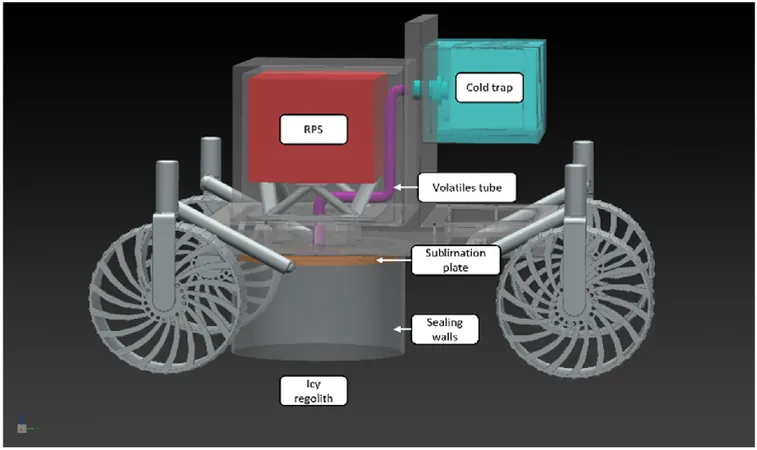
Revolutionary Lunar Rover Design Promises Decades of Ice Harvesting on the Moon!
2024-09-26
Introduction
In an exciting leap forward for lunar exploration, a groundbreaking new rover design has been proposed to effectively harvest water ice on the Moon. Since the discovery of large deposits of water ice in the Moon's permanently shadowed craters back in 1998, scientists and engineers have faced the daunting challenge of how to access these vital resources, given that solar-powered vehicles struggle to operate in such notoriously dark environments.
Innovative Power Source
Innovatively, a team of engineers has identified a potential solution: an ice-mining vehicle that harnesses americium-241 as its power source. With an astonishing half-life of 432 years, americium-241 can provide a stable energy supply for decades, making it an ideal candidate for powering a lunar rover tasked with operating in the frigid, sunlight-deprived regions of the Moon.
Importance of Lunar Water Ice
Water ice in these polar areas is not just a curiosity; it’s indispensable for future space missions, not only for sustainable lunar presence but also as a launching point for exploring greater depths of our solar system. Researchers believe that this water, believed to have come from ancient comets or formed through the solar wind, could yield up to 600 billion kilograms of ice, which can be transformed into drinking water, breathable oxygen, and even hydrogen for rocket fuel.
Challenges of Solar Energy
One of the most significant hurdles to future lunar missions is the impossibility of deploying conventional solar panels in the permanently shadowed regions (PSRs). These zones are notoriously cold, reaching temperatures around -233°C (40K), requiring innovative energy solutions to maintain rover functionalities.
Radioisotope Power Systems
The team, spearheaded by Marzio Mazzotti from the University of Leicester, has turned to Radioisotope Power Systems (RPS), previously utilized in successful deep-space explorations like the Voyager and New Horizons missions. By generating electricity from the heat produced by the natural decay of the radioactive isotopes, namely plutonium-238, these systems promise reliability and longevity.
Mining Process Innovation
In a brilliant twist, the researchers discovered that the excess thermal energy from the americium-241 could not only power the rover but also facilitate the mining process itself. The rover's design includes a sublimation plate, which could convert solid ice deposits into gas, allowing for easy collection in a cold trap, ensuring that precious resources are not lost in the harsh lunar environment.
Validation of Concepts
Through rigorous modeling and tests on icy regolith samples, the team confirmed their hypothesis: mining ice thermally from the Moon’s surface is viable. This unprecedented rover concept could revolutionize our approach to lunar resource utilization and is a crucial step toward establishing a sustainable human presence on the Moon and extending our capabilities throughout the solar system.
Conclusion and Future Outlook
Stay tuned for more updates on this thrilling development in lunar exploration—the future of space travel may just hinge on the success of this water-harvesting rover!

 Brasil (PT)
Brasil (PT)
 Canada (EN)
Canada (EN)
 Chile (ES)
Chile (ES)
 España (ES)
España (ES)
 France (FR)
France (FR)
 Hong Kong (EN)
Hong Kong (EN)
 Italia (IT)
Italia (IT)
 日本 (JA)
日本 (JA)
 Magyarország (HU)
Magyarország (HU)
 Norge (NO)
Norge (NO)
 Polska (PL)
Polska (PL)
 Schweiz (DE)
Schweiz (DE)
 Singapore (EN)
Singapore (EN)
 Sverige (SV)
Sverige (SV)
 Suomi (FI)
Suomi (FI)
 Türkiye (TR)
Türkiye (TR)